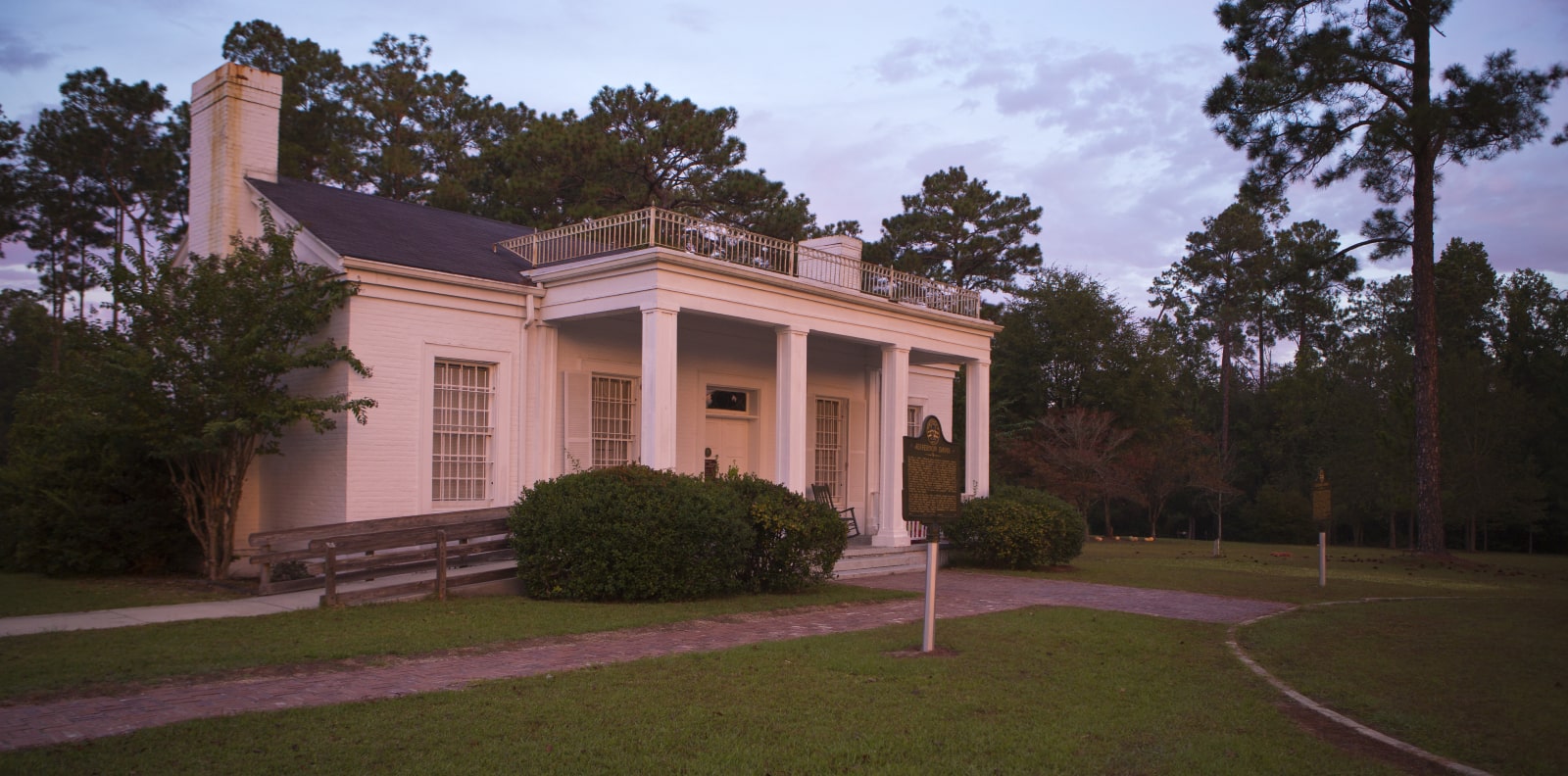Trace the End of the Civil War in Georgia
As visitors to the state will discover, much of the Civil War's endgame took place in Georgia.
Fom its final large-scale battles at Columbus and West Point’s Fort Tyler to the capture of Confederate President Jefferson Davis near Irwinville, there's much Civil War history in Georgia. In addition to the sites associated with the events of 1865, plan a visit to the Atlanta History Center, home to one of the nation’s largest and most complete Civil War exhibitions, which follows the war from its political origins to its bitter aftermath.
Nancy Get Your Gun
In 1863, Nancy Brown Morgan organized the Nancy Hart Rifles, an all-female militia committed to the defense of the west Georgia town of LaGrange. Named after Georgia Revolutionary War hero Nancy Morgan Hart, the unit drilled for two years, and on April 17, 1865, they mobilized to face a Union cavalry advance led by Colonel Oscar H. LaGrange. After meeting with the women, the colonel decided to spare the city with which he happened to share a name. A marker in front of the courthouse tells the story: “Seeing the charmingly militant array formed to meet him, Colonel LaGrange complimented them upon their fearless spirit and fine martial air and, after brief delay, marched on toward Macon leaving no scar other than the broken railroad to deface this gracious Georgia town.”
From President to Prisoner
Confederate President Jefferson Davis fled Richmond, Va., on April 2, 1865, and made his way to Washington, Georgia, where he presided over the last meeting of the Confederate cabinet on May 5. Refusing to admit defeat, Davis pressed west, where he hoped to unite rebel forces and continue the struggle. In the predawn hours of May 10, just outside Irwinville in south central Georgia, Davis was captured. Today, a monument marks the site of his arrest. The 13-acre Jefferson Davis Historic Site also maintains a museum, a short trail, and a gift shop.
The Town That Blue Built
Indianapolis newspaper editor Philander H. Fitzgerald, a former drummer boy in the Union army, created the city of Fitzgerald in 1895 as a community for Civil War veterans. Though its first residents were former Union soldiers, Fitzgerald’s citizens pledged unity with their former enemies and named the town’s streets after leaders of both armies. Located in the town’s historic railroad depot, the Fitzgerald Blue & Gray Museum tells the story of the city’s remarkable founding. More than 1,200 artifacts, from weapons to household items, are on display, as well as a replica of a tent that early settlers would have called home.
The Final Battle
Though Gen. Robert E. Lee had surrendered in Virginia, word had not yet reached parts of the Deep South, where Union cavalry units continued their destruction of the industrial heart of the Confederacy. On April 16, Union Brigadier Gen. James H. Wilson’s cavalry raiders attacked the city of Columbus from the western banks of the Chattahoochee River. The makeshift force of defenders (comprised of soldiers recovering at nearby military hospitals, local militias, elderly men, and young boys) were no match for the Union troops. Early the next morning, Columbus — which had produced more goods for the Confederacy than any city save Richmond, including the materials needed for the navy’s gunboats — was occupied, and its government buildings, industrial structures, and 125,000 bales of cotton were put to the torch.
The city’s Confederate Naval Iron Works has been restored and now serves as the Columbus Georgia Convention and Trade Center; an on-site exhibit showcases products ranging from cannons to armor forged for naval ironclad vessels. The remains of two such vessels, the CSS Jackson and the CSS Chattahoochee, as well as an extensive collection of naval artifacts, weapons, and flags, are on display at The National Civil War Naval Museum at Port Columbus. The Columbus Museum, one of the largest museums in the Southeast, also offers an exhibit on the battle and the impact of the war on the city.
Honoring P.O.W.s
The small southwest Georgia town of Andersonville, site of the infamous Camp Sumter stockade, became synonymous with the horrors of the war’s prisoner-of-war system. Built to ease overcrowding in Virginia prison camps, Sumter ultimately housed more than 32,000 Union soldiers (more than three times its capacity), and more than 13,000 died from lack of shelter, malnutrition, and poor sanitation. Today, the cemetery where they were laid to rest is part of the Andersonville National Historic Site; an onsite visitor center relates the story of Camp Sumter and other Civil War prisons, both Union and Confederate. The site is also home to the National Prisoners of War Museum, which tells the story of American POWs in all of the nation’s conflicts. Visitors to the town of Andersonville will also want to visit The Drummer Boy Civil War Museum, which showcases uniforms, guns, and other artifacts, as well as a diorama of the Camp Sumter prison.






